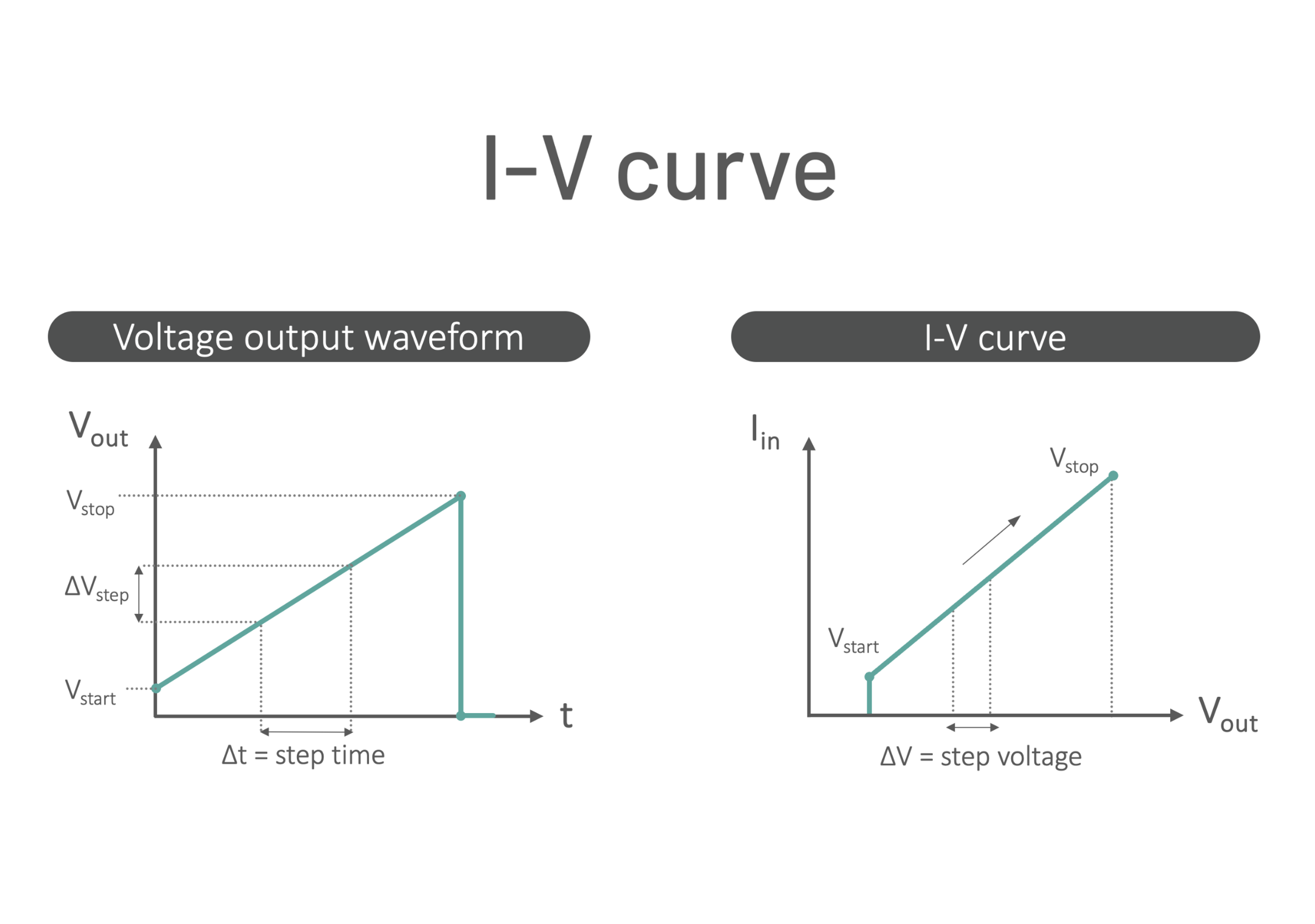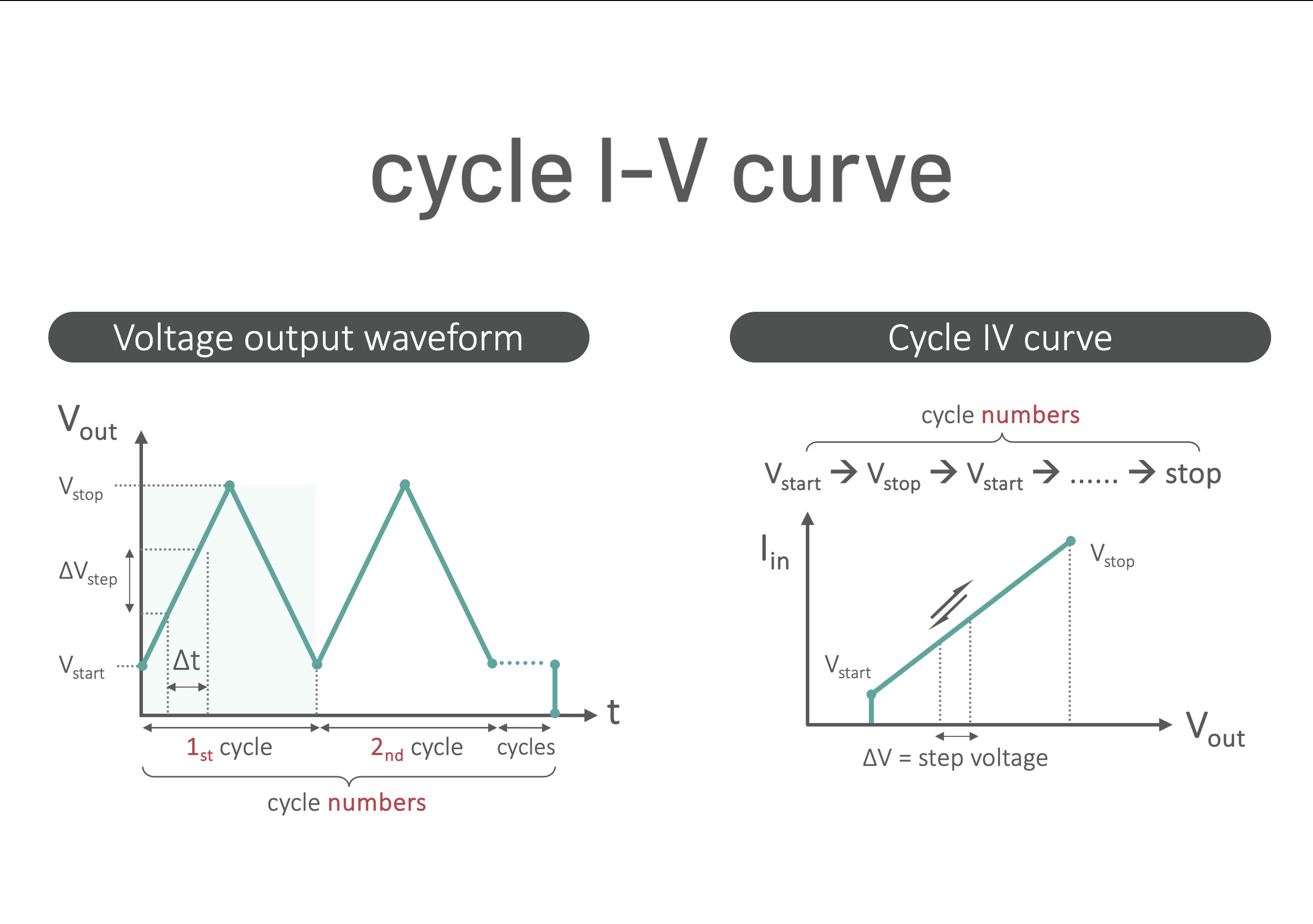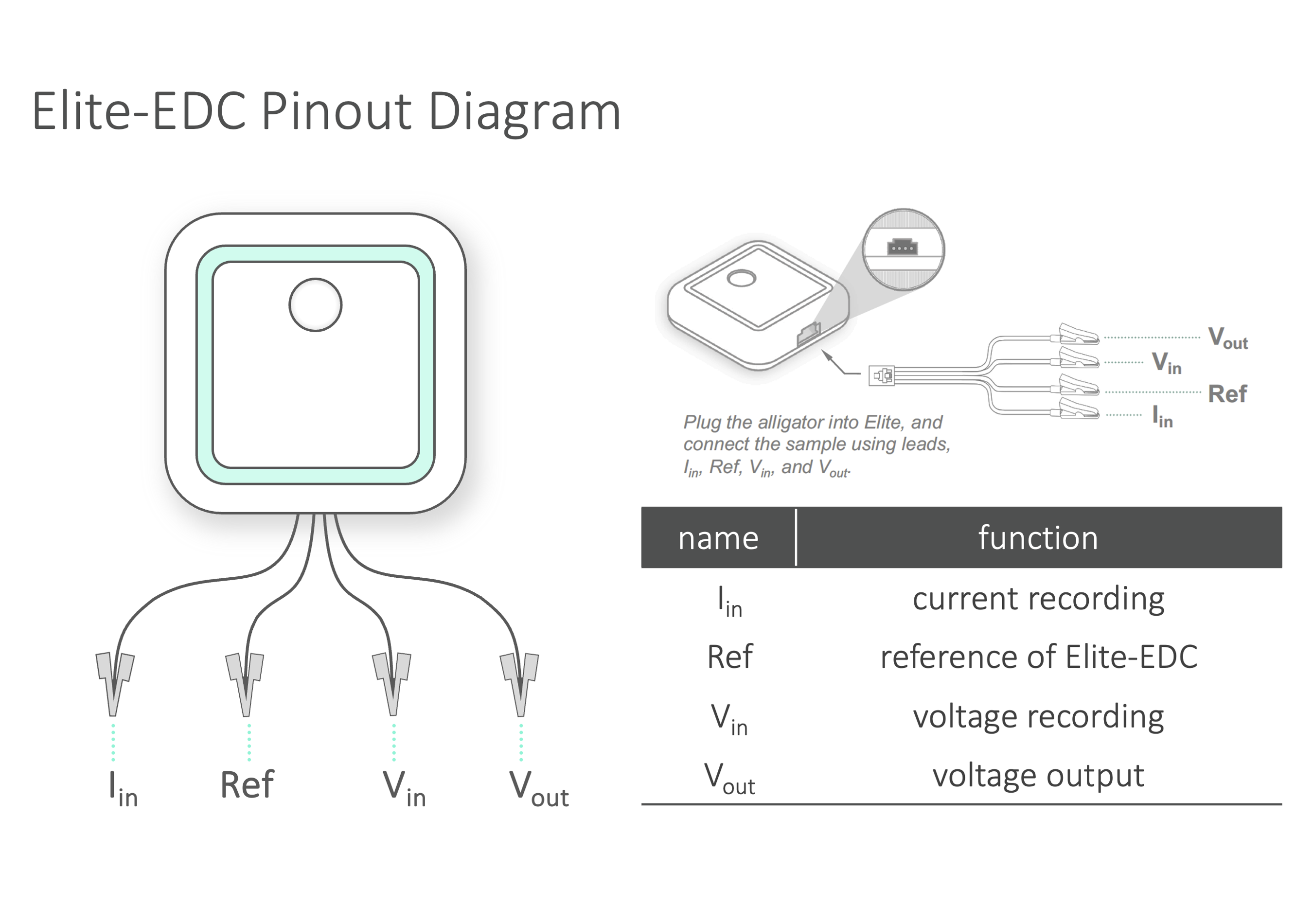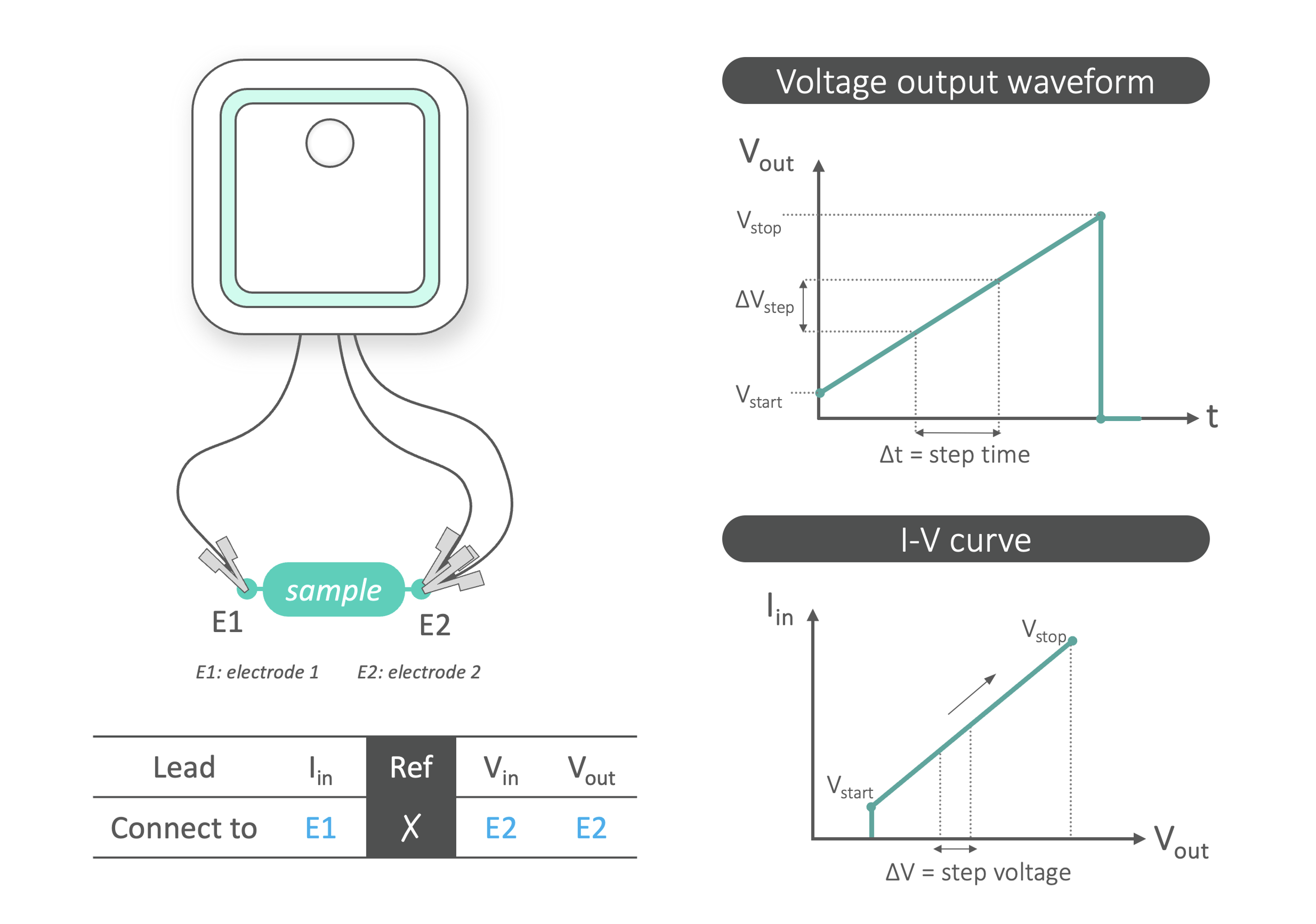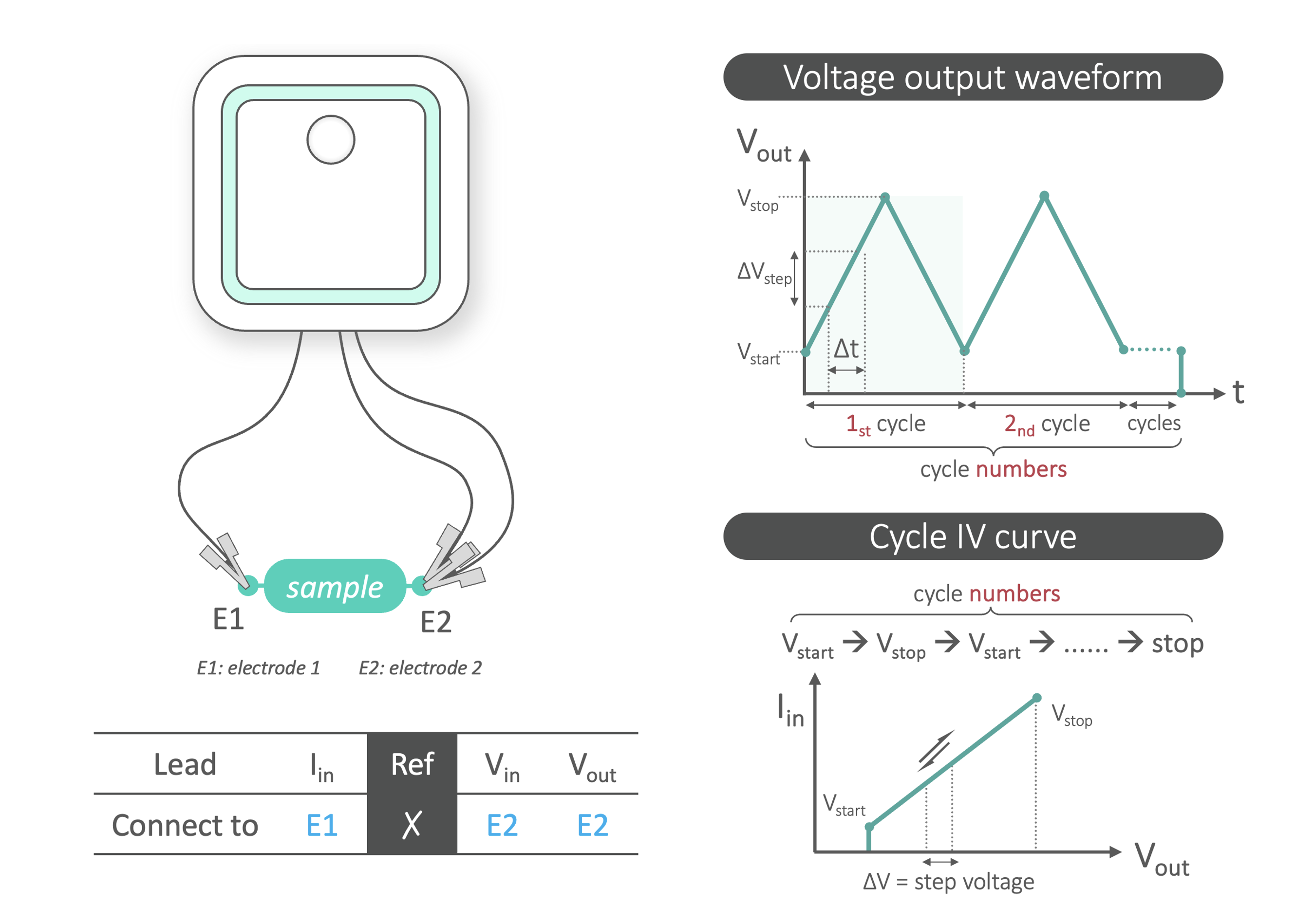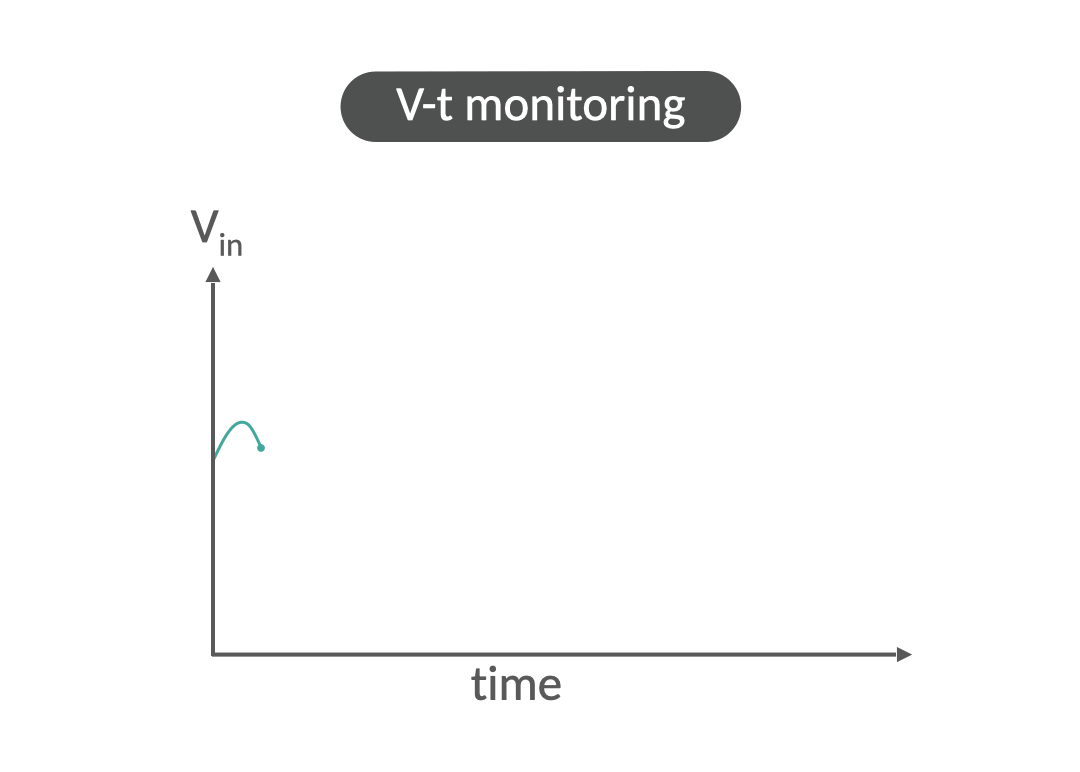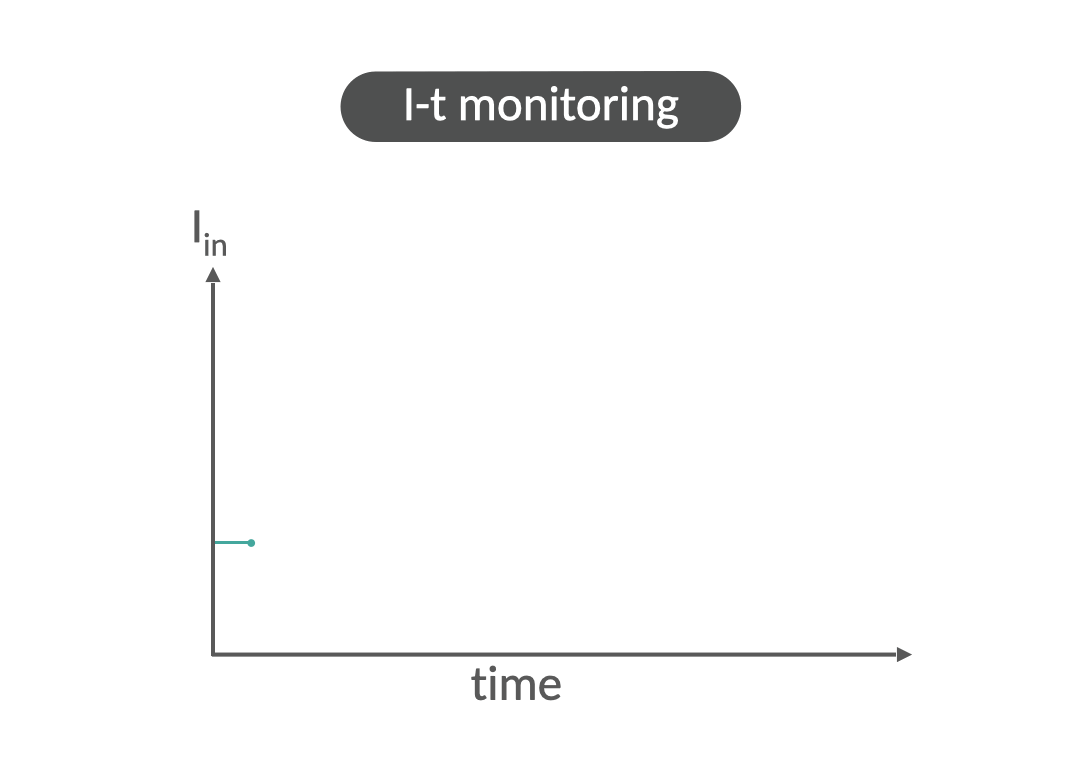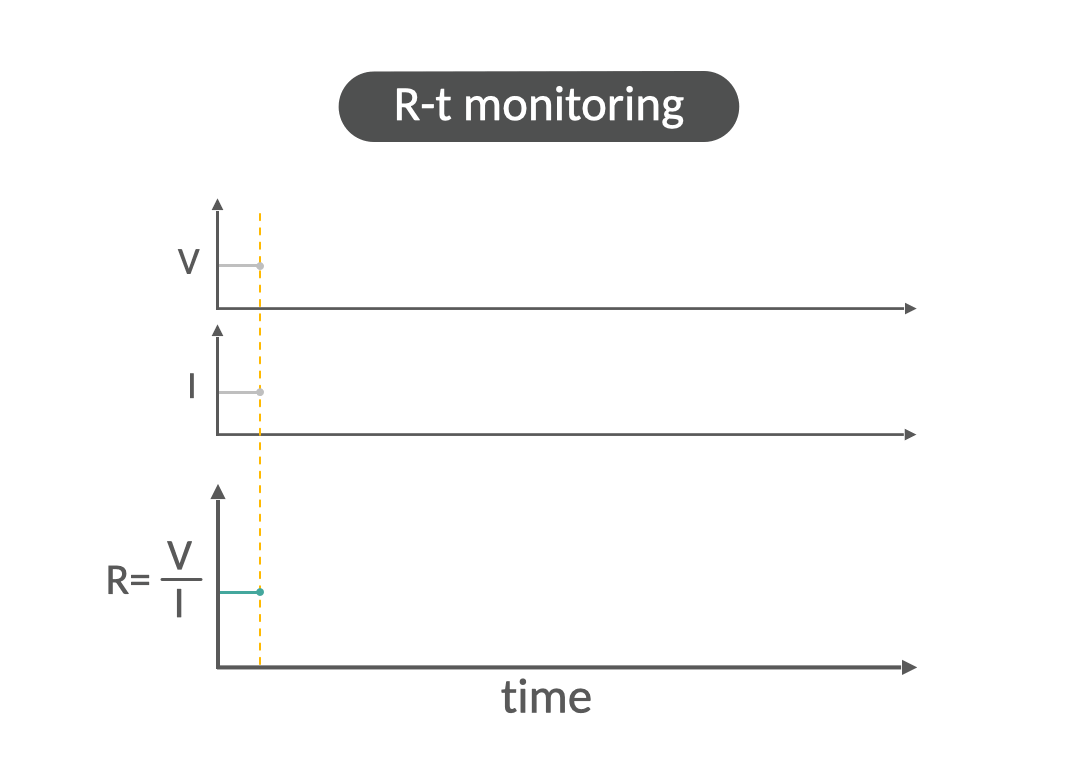Device measurement
I-V measurement
Device I-V Curve, measuring how the current flowing through a device (Iin) changes with the voltage across the device (Vout) has been a fundamental method for characterizing a device (e.g. resistors, diodes, transistors, biosensors, etc.). The I-V curve of a device refers to plotting the measured current versus voltage in a diagram. For a novel device, it is crucial to develop an analytical model for the I-V curve, so as to apply the device as a sensor or to develop a functional circuit with the device.
Click here to see how to step-by-step perform the IV characterization of solar cells using Elite-EDC.
Click here to see how to measure device Ids-Vgs and Ids-Vds curve with 2 Elite devices.
V-, I-, R-t monitoring
Monitoring the resistance, current, and voltage of a sample continuously is crucial for investigating the aging effects of various materials, as well as for charaterizing the properties of different thin films (polymer, semiconductors, etc.). This function is also useful for monitoring sensory responses in wearable devices or in unmanned, harsh environments. As the Elite is lightweight and wirelessly-controlled, it is particularly suitable for long-term monitoring in an isolated, condition-controlled chamber (e.g. a glove box). The diagrams below illustrate two types of application configuration. In the voltage-recording mode, the Elite monitors the voltage across the sample and display the measured voltage versus time in real time. In the resistance-monitoring mode, the resistance of the sample is measured continuously and displayed in real time.
Related Products

